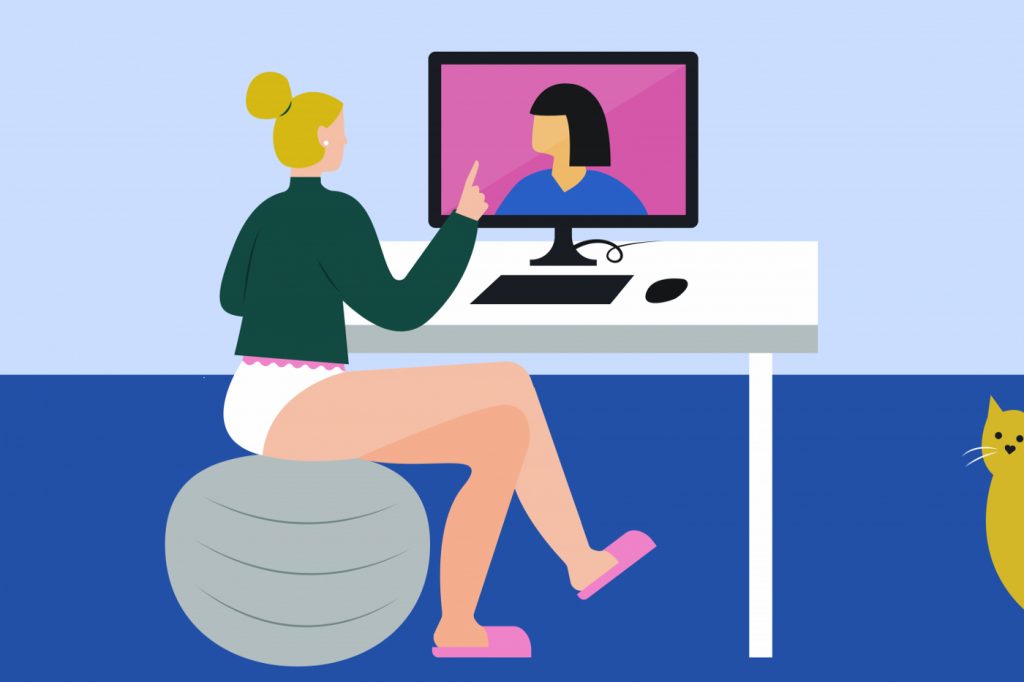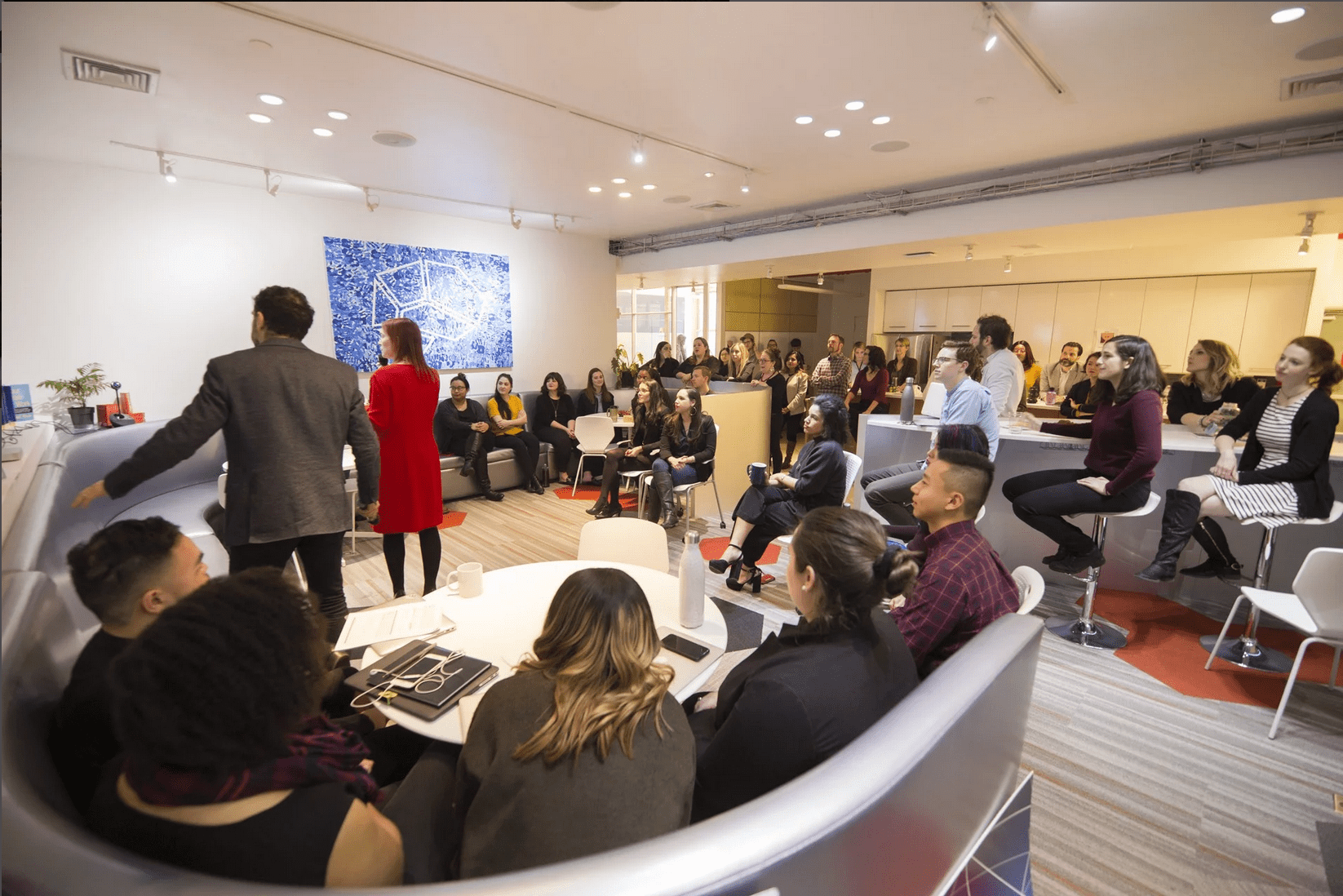A version of this post appeared in late June on David’s LinkedIn, and also on Medium.
How to approach research on different working models
Seen this over the summer in New York Times Upshot? “There’s no evidence of innovation being boosted in the office.”
We keep hearing the opposite, however, and it’s arguably been the central debate happening around the next phase of work.
For example, Nancy Baym, a senior principal researcher at Microsoft, has been recently sounding the alarm that 14 months of Work From Home is fracturing the innovation landscape in organizations. “No new ideas are getting in” and “groupthink is a serious possibility,” she says in a piece in Harvard Business Review and ‘social isolation is killing productivity’ she says in a piece in HRD.
This perspective has emerged from the Microsoft 2021 Work Trend Index, where one major takeaway was that 67% of employees are now craving more in-person collaboration with their colleagues. All well and good.
There is lots to like about Microsoft’s research in this space, where they collected huge amounts of data to see how people interacted. Many of their findings make sense. And Jamie Dimon, who runs one of the largest banks in the world (JP Morgan), also has said he’s “cancelling Zoom.” He’s bullish on full-time office work making a comeback.
But the question is, has 14 months of WFH actually reduced innovation?
To actually address this question, you would need to track the quality and quantity of innovative ideas emerging when people work in the office, compared to when they work from home or in a hybrid model. That data hasn’t been gathered yet at-scale — in this study or in others.
There’s no question that people are craving more social interaction, and having fewer random interactions, but that does not mean that people working from home are being less innovative. Concluding this could be an example of a safety bias. The human brain has a tendency to obsess about something being lost, unexpected connections, but not give the same attention to what might be being gained, which in this case might be more creative time without distractions — leading to more insights and faster problem solving.
To know if work-from-home was reducing innovation, we would have to do a complete balance sheet of the pluses and minuses, not just focus on what is being lost. Let’s dig into what we know from science, to at least assess the likelihood of this balance sheet with the research we have.
Won’t we suffer without natural brainstorming sessions?
One of the things we hear a lot from leaders is this idea that work from home is inhibiting more fluid, natural brainstorming sessions .
Obviously, it’s true that being on Teams or Zoom is more clunky than sitting across the table from our colleagues — and it definitely feels more comfortable hanging out in a room and throwing around ideas, though not so much for the introverts. However, just because something feels good doesn’t mean it is better. Often, this is a type of expedience bias — where we go with what feels right, as opposed to really considering all available data.
Here’s the big problem: while we have an intuitive belief that brainstorming is inherently a good thing, and that it leads to more strong ideas and away from groupthink, science has consistently proven that’s not true. Jonah Lehrer’s 2012 New Yorker piece on groupthink might summarize it the best:
“Decades of research have consistently shown that brainstorming groups think of far fewer ideas than the same number of people who work alone and later pool their ideas[4] .”
Here’s an Even more dramatic summary in HBR, summarized by:
“But no study has proven that brainstorming works well, even though it has been the go-to method for idea generation since 1953.”
In short, getting together in the office, while it might feel good, doesn’t increase original, creative thinking. If anything it reduces it, and increases incremental thinking or expanding on what you already know. It turns out, to increase actual creative thinking, you need something rare in a busy office.
Quiet, please
One of the reasons that offices are not generally good for innovation, as we explained in a 2016 HBR piece, is that insights tend to emerge from moments of quiet, and offices are notoriously terrible for finding quiet, nap pods be damned.
Researchers have recently begun to pay more attention to the benefits of quiet for insight. And the ultra-quiet state of meditation has been linked to better decision making, suggest findings published in Psychological Science. People in the study made smarter decisions after just 15 minutes of undisturbed time spent meditating because it made them more resistant to their own biases.
What’s more: Walking might in fact spur your next insight, according to scientists.
All these elements of work — quiet, walking, some autonomous control over your day vs. being pulled in different directions from your desk — are much more possible at home (or at a co-working) than in an office.
Back in 2012, as we wrote about in another HBR piece, we collected data from 6,000 employees in concert with a large healthcare company. We asked about where people did their best thinking. Only 10 percent said it happened at work. So why exactly are we in a hurry to force people back?
The role of positive emotions
A significant body of research shows that positive emotions correlate to increased creativity. Other research shows that innovation is also tied to how engaged people feel, i.e. the level of positive emotions they have, specifically about work.
Engagement, forever tracked by HR analytics teams, had been in decline for roughly 20 years until the pandemic — and then, they went up. Measures of productivity also went up during COVID, in most studies.
One of the reasons those engagement scores went up during COVID is because there was naturally more autonomy. The nature of being at home, or co-working, and sometimes being surrounded by family or children, created stress in pockets, but it also meant you could spend 45 minutes on eating lunch with your spouse, walking your dog or doing yoga, and still get your work done. Decades of research has shown that giving people more autonomy or control over a situation can be a powerful stress reliever, and driver of positive emotions. In short, control over one’s schedule and one’s day was powerfully engaging.
If engagement went up with work from home, and engagement is correlated with greater innovation, why would we assume that innovation will be better in the office?
Related: remember near the beginning of COVID, there was a deep assumption that without a physical HQ and place to report, the culture would wither? That was proven untrue: the culture is not the building. Stands to reason that assumptions about where innovation must occur could also be proven untrue.
So, what now?
Without formally measuring the impact on innovation, the sum total of evidence suggests that work from home will actually increase innovation or at worst do nothing.
The balance sheet says fewer random interactions on one side, but greater conditions for creative work itself to flourish on the other.
The “random encounter” effect that we often hear held up is more rare than we realize. As noted above, only about 10% of people do their best work at work. There’s been other studies indicating that people in-office will regularly put headphones on to avoid their co-workers, even teammates. This is reality. Call that “effect size.”
Some ideas to consider
In a hybrid environment, if you want to lift innovation, consider banning meetings before 11am, as studies have shown that people do their best creative work first thing. Leave space for people to reflect, whether at work or home. Consider “No-Zoom Fridays” or ‘Minimal meeting Mondays.” Consider reducing 30-minute meetings to 25, and one-hour meetings to 50 minutes. The more space between meetings, the more insights people are likely to have.
It is true that some people will be happier in an office, often because of the conditions they face at home, or they just like other humans a lot. Being happier, these people might be more creative in an office, but they are a minority — with various studies putting them at something in the order of 20-30% of a company. A similar number is passionate about remaining at home, and a similar number wants a mix. With this kind of ratio, forcing a whole business back to the office full time on the basis of fear of losing an innovative edge is unlikely to be good business.
It is also true that going into the office might be good for bumping into people and creating certain connections, yes, but there is no evidence yet that it’s a better model for fostering innovation overall. The benefits of this could be focused on teams that truly need to innovate, and could be had by going into an office just a few days every few weeks.
There is something else that we are all ignoring, that’s very true indeed. Remember that most companies went to full work from home in under a week in March 2020; some did it overnight. Next, companies condensed literally years of innovation into weeks, as they reinvented how they researched, designed, marketed, sold, and delivered just about everything in the commercial universe. 2020 was perhaps the most innovative year since WWII and perhaps since a lot longer.
And this all happened while most of us worked from the laundry room, on a personal laptop, with little to no idea how to run a virtual meeting. Imagine what we could do with the right technology, skills and processes, with a good chunk of the workforce able to get the quiet their brain needs to innovate. Don’t force people back to the office. Instead let the humans roam free, watch their minds wander productively, especially those who want to work from home and are now set up to do so, and we may see the biggest decade of innovation in history.






